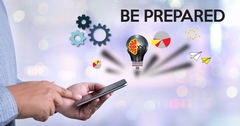
Emergencies can strike unexpectedly, requiring swift action and a well-thought-out plan. Whether it's a natural disaster, a fire, or any unforeseen event necessitating evacuation, having a carefully prepared evacuation kit and plan can make all the difference. In this guide, we'll explore the essentials to pack and plan for a swift exit, ensuring you and your loved ones are ready to face the unexpected with resilience and preparedness.
Create a Comprehensive Evacuation Plan
Emergency Contacts
Compile a list of emergency contacts, including family members, friends, and local authorities. Ensure everyone in your household has access to this list, both in digital and hard-copy formats.
Evacuation Routes
Identify primary and secondary evacuation routes from your home or workplace. Familiarize yourself with local evacuation centers and shelters, and have multiple routes planned in case certain paths are blocked or inaccessible.
Communication Plan
Establish a communication plan with your family or household members. Designate a meeting point outside your home and establish a communication protocol using a combination of text messages, phone calls, and social media to stay in touch during an evacuation.
Build an Evacuation Kit
-
Essential Documents:
Organize and secure important documents in a waterproof and fireproof container. Include passports, identification, insurance policies, medical records, and any other critical paperwork. -
First Aid Kit:
Pack a comprehensive first aid kit that includes bandages, antiseptic wipes, pain relievers, prescription medications, and any specific medical supplies your family may need. -
Clothing and Personal Items:
Prepare a change of clothing for each family member, including sturdy shoes and weather-appropriate outerwear. Don't forget essential personal items such as toiletries, sanitary supplies, and baby necessities. -
Food and Water:
Stock non-perishable food items such as energy bars, canned goods, and dried fruits. Include a supply of bottled water (at least one gallon per person per day) to last for several days. -
Flashlights and Batteries:
Ensure you have reliable flashlights with extra batteries. LED flashlights are energy-efficient and provide long-lasting illumination. -
Portable Chargers:
Pack portable chargers for your electronic devices, such as smartphones and tablets. A charged phone can be a crucial lifeline for communication and access to emergency information. -
Blankets and Sleeping Bags:
Include lightweight blankets or sleeping bags to provide warmth and comfort during evacuation. Choose items that are easy to carry and store. -
Multi-Tool or Knife:
A versatile multi-tool or knife can prove invaluable in various situations, from opening packages to handling small repairs. -
Important Family Keepsakes:
Consider including sentimental items or irreplaceable family keepsakes that can bring comfort during challenging times.
Stay Informed
Weather and Emergency Alerts
Keep a battery-powered weather radio or a reliable app on your phone to stay informed about changing weather conditions and emergency alerts in your area.
Local News Sources
Monitor local news sources for real-time updates and evacuation instructions. Social media platforms and community alert systems can also provide critical information.
Community Resources
Be aware of community resources and emergency services available to you. This includes knowing the location of emergency shelters and evacuation routes.
Regularly Update Your Evacuation Kit
Check Expiry Dates
Regularly review and replace any expired items in your evacuation kit, including food, medications, and batteries.
Seasonal Adjustments
Update clothing and supplies based on seasonal changes. Ensure your kit is equipped to handle both hot and cold weather, depending on your location.
Family Changes
Update your evacuation plan and kit to accommodate any changes in family composition, such as the addition of new members or changes in health conditions.
Being prepared for an evacuation is a responsibility that should not be taken lightly. By creating a comprehensive evacuation plan and assembling a well-equipped evacuation kit, you increase your chances of navigating emergencies with confidence and resilience. Stay informed, stay connected, and regularly update your evacuation essentials to ensure that you and your loved ones are ready to face the unexpected challenges that may come your way. Planning today can make all the difference in ensuring a swift and safe exit when it matters most.